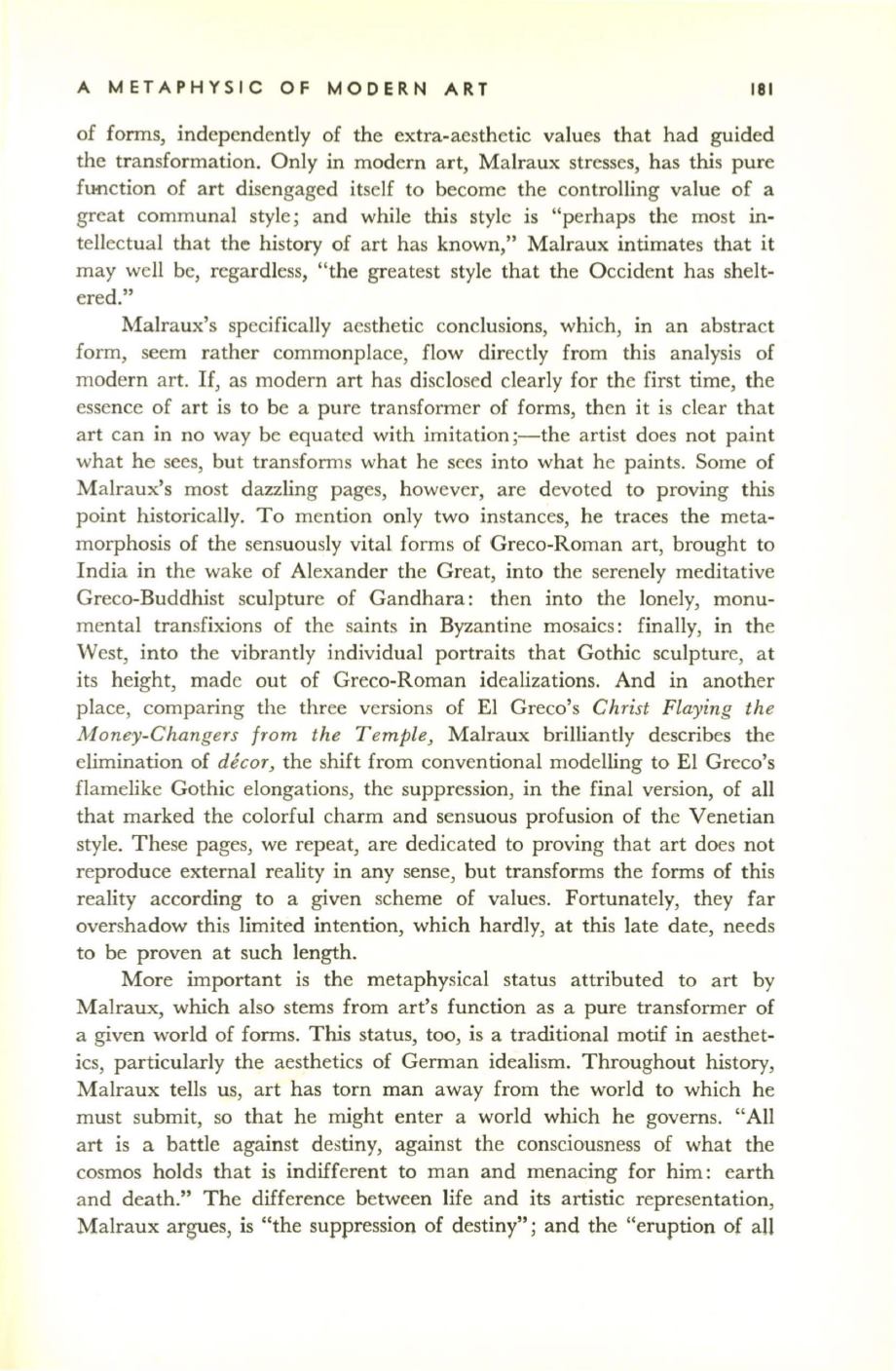
A
METAPHYSIC OF MODERN ART
181
of fonns, independently of the extra-aesthetic values that had guided
the transformation. Only in modern art, Malraux stresses, has this pure
function of art disengaged itself to become the controlling value of a
great communal style; and while this style is "perhaps the most in–
tellectual that the history of art has known," Malraux intimates that it
may well be, regardless, "the greatest style that the Occident has shelt–
ered."
Malraux's specifically aesthetic conclusions, which, in an abstract
form, seem rather commonplace, flow directly from this analysis of
modern art.
If,
as modern art has disclosed clearly for the first time, the
essence of art is to be a pure transformer of forms, then it is clear that
art can in no way be equated with imitation;-the artist does not paint
what he sees, but transfonns what he sees into what he paints. Some of
Malraux's most dazzling pages, however, are devoted to proving this
point historically. To mention only two instances, he traces the meta–
morphosis of the sensuously vital forms of Greco-Roman art, brought to
India in the wake of Alexander the Great, into the serenely meditative
Greco-Buddhist sculpture of Gandhara: then into the lonely, monu–
mental transfixions of the saints in Byzantine mosaics: finally, in the
West, into the vibrantly individual portraits that Gothic sculpture, at
its height, made out of Greco-Roman idealizations. And in another
place, comparing the three versions of El Greco's
Christ Flaying the
Money-Changers from the Temple,
Malraux brilliantly describes the
elimination of
decor,
the shift from conventional modelling to El Greco's
fIamelike Gothic elongations, the suppression, in the final version, of all
that marked the colorful charm and sensuous profusion of the Venetian
style. These pages, we repeat, are dedicated to proving that art does not
reproduce external reality in any sense, but transforms the forms of this
reality according to a given scheme of values. Fortunately, they far
overshadow this limited intention, which hardly, at this late date, needs
to be proven at such length.
More important is the metaphysical status attributed to art by
Malraux, which also stems from art's function as a pure transformer of
a given world of fonns. This status, too, is a traditional motif in aesthet–
ics, particularly the aesthetics of Gennan idealism. Throughout history,
Malraux tells us, art has torn man away from the world to which he
must submit, so that he might enter a world which he governs. "All
art is a battle against destiny, against the consciousness of what the
cosmos holds that is indifferent to man and menacing for him: earth
and death." The difference between life and its artistic representation,
Malraux argues, is "the suppression of destiny"; and the "eruption of all


